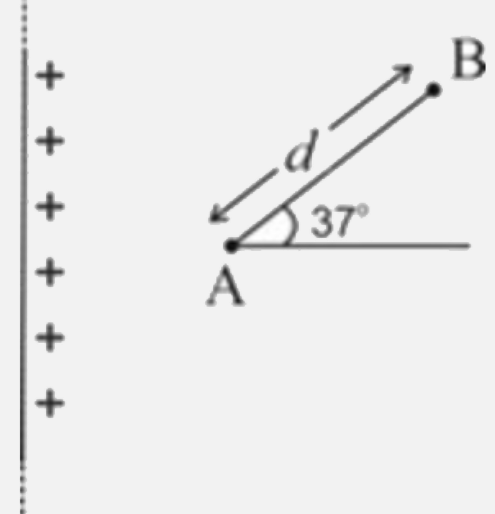Find the potential difference Va−Vb between the points (1) and (2) shown in each part of Fig.

(a) We first distribute the charges on different capacitors and branches keeping in mind Kirchhoff's junction rule .We can start from any battery. In this case, We start from battery ε1. Let battery ε1 supply a charge q The charge on the left plate of capacitor C1 wil be q as this plate is receiving the charge. Now charge q reches junction b where it is divided into two Paths. Let charge x go to capacitor C3, then the remaining charge q−x will go to capacitor C2. In juncation a, we can verify Kirchoeff's juncation rule, i.e., the incoming charge is equal to the outgoing charge. Now we write the loop equations.
For loop 1
2−q2−xC=0
For loops 2
2+xC−(q−x)2=0 (i)
or 2+xC−q2+x2=0 ......(ii)
From (i) and (ii)
2xC+x2=0
or x(2C+12)=0
or x=0(since 2C+12≠0)
No charge will go to the capacitor connected across (1)−(2). A there is no charge in the capacitor connected across (1) and (2), the potential difference across (1) and (2) should be zero.

(b) In this case also, we will first distribute the charges. Let us start from the 24V battery. Let this battery supply a charge q, which is divided into two paths after reaching juncation (2). Let x charge move toward the 2μF capacitor, then the reminaning charge q−x will move toward the 4μF capacitor, as per Kirchhoff's juncation rule. Now we write the loop equations.

In the upper closed loop
+6+(q−x)4−x2−12=0 or q4−x=6....(i)
In the lower closed loop
12+x2+q1−24=0 or q+x2=12.....(ii)
From (i) and (ii),
x=−83μC
Moving from (1) to (2) through middle path
Va+12−8/32=Vb
or Va−Vb=43−12=−323V
Topper's Solved these Questions
- CAPACITOR AND CAPACITANCEBook:CENGAGE PHYSICS ENGLISHChapter:CAPACITOR AND CAPACITANCEExercise:Solved Examples
Explore 10 Videos
- CAPACITOR AND CAPACITANCEBook:CENGAGE PHYSICS ENGLISHChapter:CAPACITOR AND CAPACITANCEExercise:Exercise 4.1
Explore 13 Videos
- ATOMIC PHYSICSBook:CENGAGE PHYSICS ENGLISHChapter:ATOMIC PHYSICSExercise:ddp.4.3
Explore 15 Videos
- CENGAGE PHYSICS DPPBook:CENGAGE PHYSICS ENGLISHChapter:CENGAGE PHYSICS DPPExercise:subjective type
Explore 51 Videos
Similar Questions
Find the potential difference Va−Vb , between the points a and b shown in each part of the figure.

View SolutionFind the potential difference Va−Vb between the points a and b shown in each part of the figure.

View SolutionFind the potential differnce VA−VB between points A and B of the circuit shown in.
 .
.
View SolutionAn infinite thin non - conducting sheet has uniform surface charge density σ. Find the potential difference VA−VB between points A and B as shown in the figure. The line AB makes an angle of 37∘ with the normal to the sheet. (sin37∘=35)

View SolutionFind the potential difference Va−Vbin the circutis shown in figure

View SolutionFind the potential difference (inV) between points A and B shown in the circuit.

View SolutionFind the potential difference VA−VB between points A and B of the circuit shown in figure.

View SolutionThe potential difference (VA−VB) between the point A and B in the given figure is

View SolutionThe potential difference (VA−VB) between the point A and B in the given figure is

View SolutionConsider
 .
.
The potential difference VA−VB is.
View Solution
